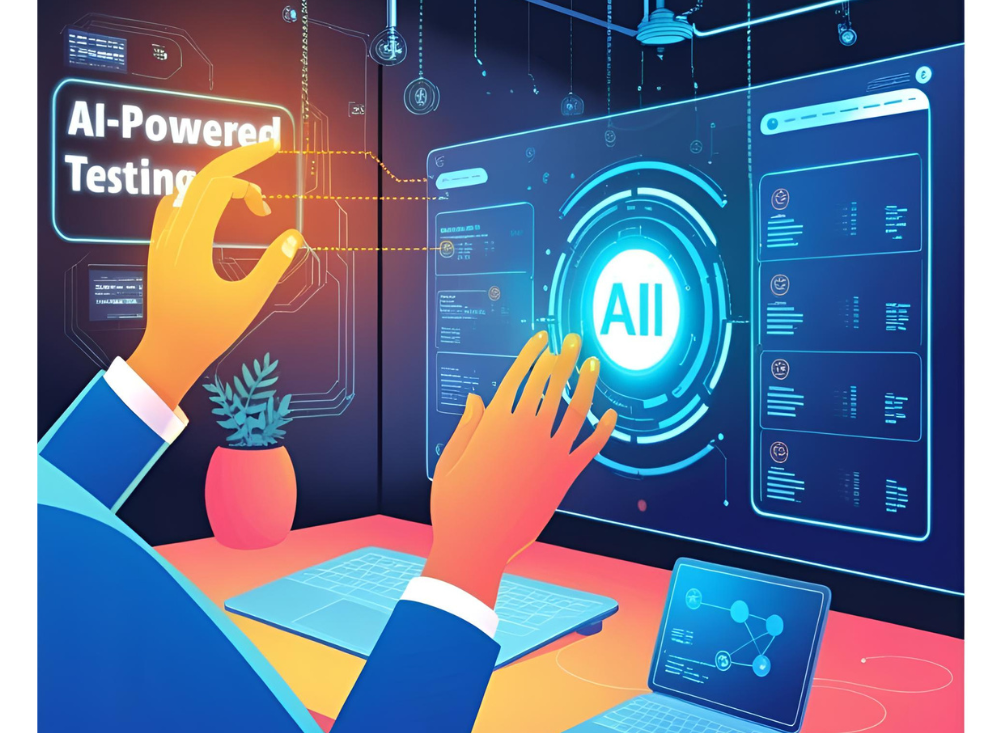
Artificial Intelligence (AI) has revolutionized the field of software testing, bringing unprecedented levels of efficiency, accuracy, and scalability. From automating repetitive tasks to predicting potential defects, AI-powered testing tools have become indispensable in modern software development. However, as organizations increasingly adopt AI in testing, it’s essential to recognize the importance of the human element. Striking the right balance between AI and human expertise is crucial for achieving optimal results. This article explores the role of the human element in AI-powered testing and how to maintain this balance effectively.
The Rise of AI in Software Testing
AI-powered testing tools have transformed the way software is tested. They can:
- Automate repetitive tasks like test case execution and script maintenance.
- Analyze large datasets to identify patterns and predict potential defects.
- Optimize test coverage by prioritizing high-risk areas.
- Provide real-time feedback and insights to improve testing efficiency.
While these capabilities are impressive, they are not a replacement for human testers. Instead, AI should be seen as a powerful tool that complements human skills and expertise.
The Role of the Human Element in AI-Powered Testing
Despite the advancements in AI, human testers bring unique qualities that machines cannot replicate. Here’s why the human element remains indispensable in AI-powered testing:
1.Critical Thinking and Creativity
- Human Strength: Testers can think critically, explore edge cases, and creatively simulate real-world scenarios that AI might overlook.
- AI Limitation: AI operates based on predefined algorithms and data, limiting its ability to think outside the box.
2.Contextual Understanding
- Human Strength: Testers understand the business context, user expectations, and domain-specific requirements, enabling them to design more relevant and effective tests.
- AI Limitation: AI lacks the ability to fully grasp the nuances of business goals and user needs.
3.Ethical and Subjective Decision-Making
- Human Strength: Testers can make ethical decisions and evaluate subjective aspects like usability, accessibility, and user experience.
- AI Limitation: AI cannot assess subjective qualities or make ethical judgments.
4.Adaptability to Change
- Human Strength: Testers can quickly adapt to changes in requirements, technology, or project scope.
- AI Limitation: AI requires retraining or reconfiguration to adapt to significant changes.
5.Collaboration and Communication
- Human Strength: Testers collaborate with developers, product managers, and stakeholders to align testing efforts with business goals.
- AI Limitation: AI cannot replace the human ability to communicate, negotiate, and build relationships.
Striking the Right Balance
To maximize the benefits of AI-powered testing while leveraging human expertise, organizations must strike the right balance. Here’s how:
1.Define Clear Roles and Responsibilities
- Clearly outline the roles of AI and human testers in the testing process. For example, AI can handle repetitive tasks, while humans focus on exploratory testing and strategic decision-making.
2.Leverage AI for Efficiency, Not Replacement
- Use AI to enhance efficiency and accuracy, but not as a replacement for human testers. Humans should oversee AI-driven processes and intervene when necessary.
3.Foster Collaboration Between AI and Humans
- Encourage collaboration between AI tools and human testers. For example, AI can provide insights and recommendations, while humans interpret and act on them.
4.Invest in Continuous Learning
- Equip testers with the skills to work effectively with AI-powered tools. Provide training on AI concepts, data analysis, and tool usage.
5.Maintain Human Oversight
- Ensure that human testers review and validate AI-generated results. This helps catch errors or biases that AI might introduce.
6.Focus on High-Value Tasks
- Free up human testers from repetitive tasks by automating them with AI. This allows testers to focus on high-value activities like test design, strategy, and innovation.
7.Embrace a Hybrid Approach
- Adopt a hybrid testing approach that combines the strengths of AI and human testers. For example, use AI for regression testing and humans for exploratory testing.
Benefits of Balancing AI and Human Expertise
Striking the right balance between AI and human testers offers several benefits:
- Improved Test Coverage: AI enhances coverage by identifying high-risk areas, while humans ensure comprehensive testing of edge cases and real-world scenarios.
- Faster Feedback: AI accelerates test execution, while humans provide context and insights for faster decision-making.
- Higher Quality: The combination of AI’s precision and human creativity leads to higher-quality software.
- Cost Efficiency: Automating repetitive tasks with AI reduces costs, while human expertise ensures effective use of resources.
- Innovation: Human testers can focus on innovation and strategic initiatives, driving continuous improvement.
Challenges in Balancing AI and Human Expertise
While the benefits are significant, organizations must address several challenges:
- Resistance to Change: Testers may be hesitant to adopt AI-powered tools due to fear of job displacement or lack of understanding.
- Skill Gaps: Testers may need upskilling to work effectively with AI tools.
- Ethical Concerns: Ensuring transparency and fairness in AI algorithms is crucial to avoid biased outcomes.
- Integration Complexity: Integrating AI tools into existing workflows can be complex and time-consuming.
Conclusion
AI-powered testing is a game-changer for software development, but it is not a substitute for human expertise. The human element brings critical thinking, creativity, and contextual understanding that AI cannot replicate. By striking the right balance between AI and human testers, organizations can achieve optimal results, delivering high-quality software that meets user expectations and business goals.
Start by defining clear roles, fostering collaboration, and investing in continuous learning. Embrace a hybrid approach that leverages the strengths of both AI and humans, and you’ll be well on your way to transforming your testing efforts. With the right balance, you can harness the power of AI while preserving the invaluable human touch in software testing.